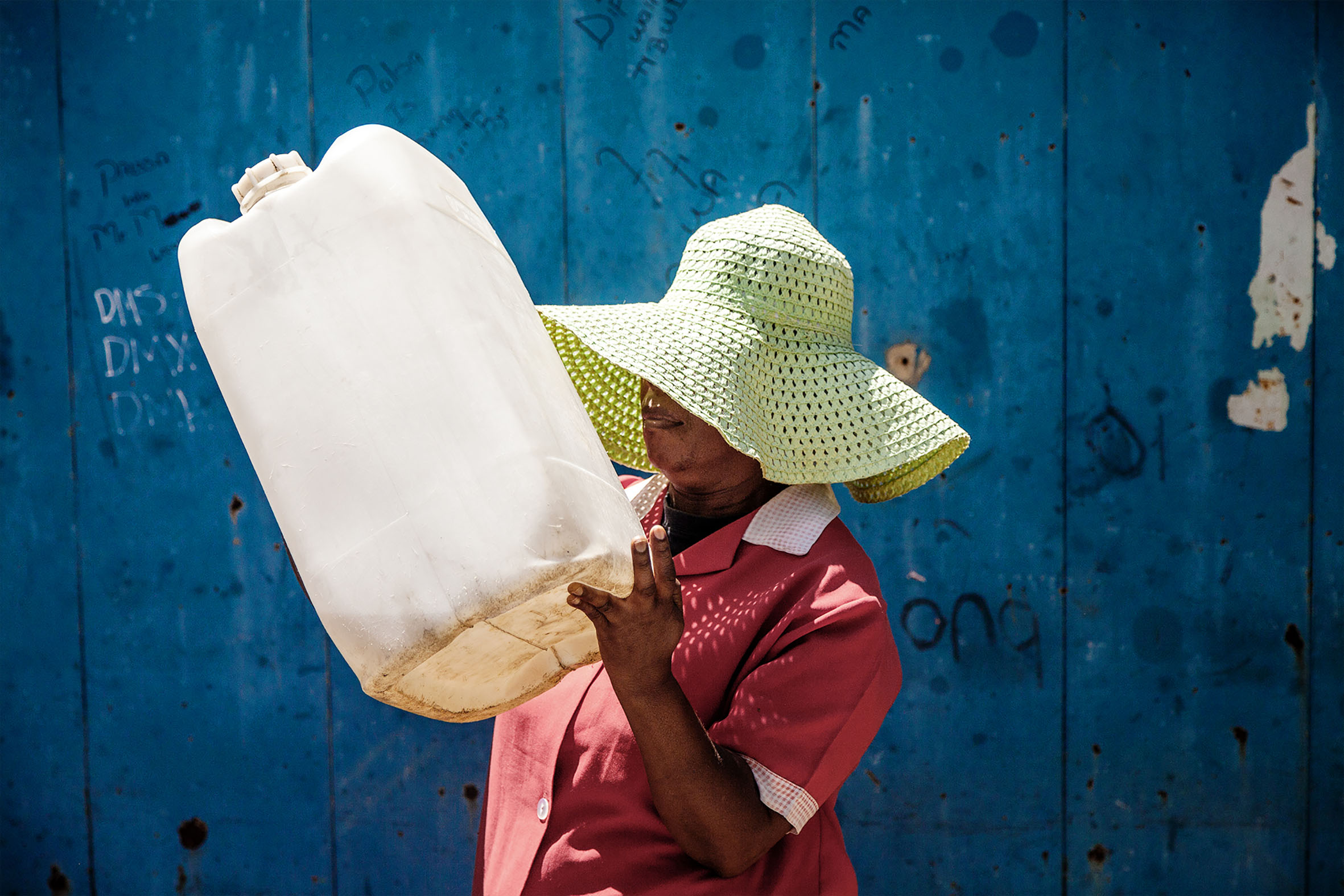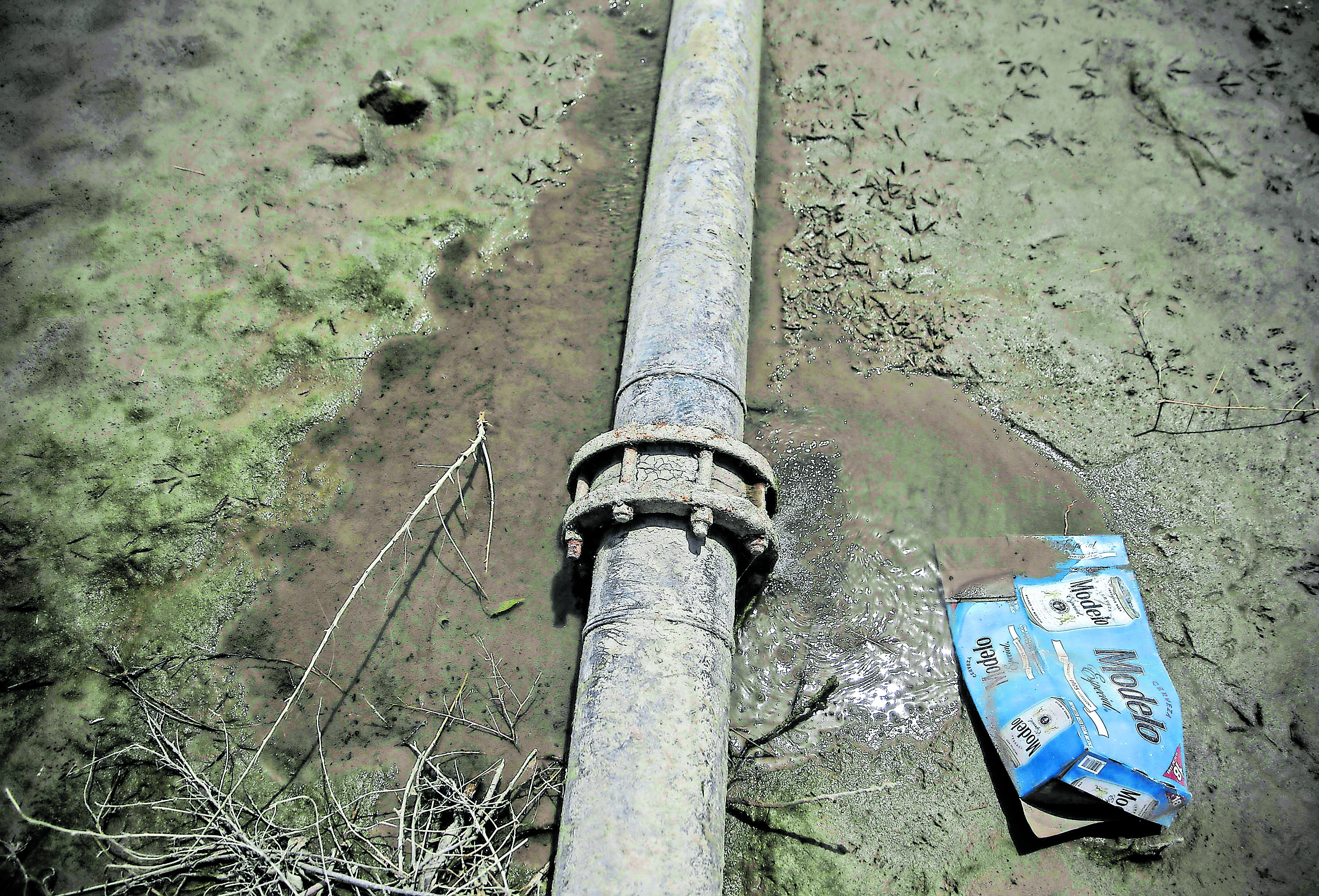Gautengers use 300 litres of water a day each, which already exceeds the provinces annual allocation. Rand Water collects water from the Vaal River, but it cannot extract as much as it needs to. (SA Tourism)
One El Niño is all it will take to throw Gauteng into a water crisis. Consumption already exceeds supply during a year of good rainfall.
This year’s rainfall is low and El Niño is forecast. Scientists have picked up a quick heating up of a large part of the southern Pacific Ocean, the tell-tale sign that the weather phenomenon is building up. This disrupts weather patterns across the globe, and tends to lead to drought across the southern hemisphere and flooding in the northern hemisphere.
In 2015, El Niño ran the province close to a point where it would run out of its available water. A network of 14 dams averted that fate. Now, the population has grown, water use has increased and supply is still at the same level.
The numbers for water in Gauteng are straightforward. People in the province each use 300 litres of water each day. This is double the world average, and more than triple that of Cape Town.
The national water department calculates that people need 25 litres a day to survive. This means that Rand Water — the utility that supplies most of Gauteng — needs to get 1 600-million cubic metres of water to the province each year. This is the maximum amount that it is allowed to take out of the Vaal River and its network of tributaries and dams.
So, even without a drought, the province is starting to use more water than it has.
Making sure that this point was not reached should also have been straightforward. Water is about managing risk. South Africa is a semi-arid country with regular droughts. Building dams and keeping wetlands intact gives towns and cities a buffer against these droughts. That involves planning decades in advance, and interrogating the assumptions of those plans every five years. This is especially important with a changing climate that makes weather patterns more unpredictable.
The national water department is responsible for this planning, by doing a “reconciliation scenario” for each major river system. This works out how much water is used, and how much is available. At the point where demand outstrips supply, something has to be done, such as building a new dam to catch more rainfall.
The Vaal scenario said the system needed a new dam to be ready by 2018. A new phase of the Lesotho Highlands scheme was signed off and tenders were awarded. But then water minister Nomvula Mokonyane intervened, forcing the tenders to be done again to reward different companies. The dam — Polihali — and its water pipelines are now expected to be finished in 2026. The water department also owes the utility building the dam R1.5-billion and doesn’t have money to pay its debts. So it might not be able to raise money for the dam.
Gauteng’s water planning, however, still includes water from Polihali being available this year. It also includes treated water from acid mine drainage flows being available. Critically, the data for water flow and effects from changing climate are 15 years out of date. And, where people from across government should be meeting twice a year to discuss the water situation, funding shortages at water affairs means they aren’t.
This means the plan being used by utilities and municipalities is hopelessly different from reality.
In an attempt to fix this, the provincial government commissioned a new plan, from the Gauteng City-Region Observatory. It is still in draft phase. It starts with a warning: “The experience of Cape Town has shown how quickly a large city can enter a crisis if it is not prepared.”
Given the amount of water people in Gauteng already use, and the lack of new sources of water, it says: “To address this chronic risk, supply restrictions will have to be applied even in normal years.”
With the population growing from just over 14-million to 19-million by the time Polihali dam is working, it says people will have to reduce water use by 70 litres each day to 230 litres. This is much less ambitious than what Cape Town achieved, but Cape Town’s reductions hit the city’s economy and people hard.
Rand Water has already asked municipalities to lower their water use. On bad days, when Johannes-burg is using too much water, the utility throttles the amount of water it supplies.
Much of the problem is caused by leaks in old pipes, so cities are trying to find money to fix this. There are also plans to treat sewage water and water inside old mine shafts to the point where it can be safely drunk.
At best, these two plans could only deliver clean drinking water by 2022. El Niño will reach full strength next year. This year’s rainfall is half of what it should be.
Gauteng is in for a crisis. But it can be largely averted if people use less water.
A taste of the future
With a major drought, expect rolling water shortages, much like Eskom’s load-shedding when it doesn’t have enough electricity-generating capacity.
If you live in Gauteng, you’ve already had a taste of what will happen. Cable thefts prevent water pumps from filling up reservoirs, so they go dry. Pump water is also used for extinguishing fires.
Reservoirs take water from treatment plants and store it on a high point, so gravity can get it to homes and businesses. They can also run empty on hot days, when people use too much water. With broken municipal water infrastructure and Rand Water not being able to supply more water, local water shortages will continue to happen.
Repeating Cape Town’s mistakes
In 2008, Cape Town’s water models showed that water use would exceed supply by 2015. New dams or water infrastructure to move water from one place to another would need to be in place by then.
But two years of high rainfall and a successful water-saving initiative in the city convinced it that the date could be pushed back to 2022. Political infighting between the provincial rulers, the Democratic Alliance, and the national ruling party, the ANC, meant the national water department — responsible for regional water planning — didn’t push back on this decision.

Cape Town implemented water-saving measures, such as cutting individual use per day to 50 litres. (Gustav Butlex)
This was in 2013. Then the province was plunged into a three-year drought. Extreme water-saving measures would go on to help Cape Town avoid “Day Zero” — the point at which piped water supply would be shut off. But research published in the journal Nature shows that building new infrastructure by 2015 would have cost R700-million. The drought ended up costing R2.5-billion, mostly in lost income from water sales.
Gauteng has followed the exact same path, by pushing back its infrastructure build despite plans telling it to do otherwise. Its only advantage is the size of its water catchment. Cape Town gets water from an 800km2 area, so one drought can mean no water. Gauteng’s catchment covers 40 00km2, so it has more chance to get rain in one place when there is a drought in another.
Sewage, mine water and leaks
Between 25% and 50% of the water that Rand Water gives to municipalities leaks out of their pipelines. The best-practice average is just above 20%. So this could be a real way to save water. But fixing this means municipalities have to replace water pipelines that are sometimes a century old, and there is little in their operating budgets for this.
Another plan that has been floated is for polluted water inside old mines to be treated. The infrastructure for this would cost R15-billion (Polihali dam will cost R25-billion) and need a budget of R2.5-billion each year to operate. This would add 25% to Rand Water’s costs each year, but only give the province 5% more water.

Water could be saved if old pipelines were replaced, but this is a costly exercise
What is more likely is that cities in the province push through on plans to reuse water from sewage treatment plants. This is standard practice in other countries, with Windhoek in Namibia pioneering the technology. An attempt to do this in eThekwini was stopped by people who refused to drink water from sewage plants, but planners say a crisis will convince people to accept the technology.
It will also solve a big headache for municipalities — sewage plants are expensive to run and use a lot of electricity. They don’t pay for themselves. But, if they can sell drinking water, they become profitable. That in turn will help to solve the sewage crisis, which allows raw sewage to flow into rivers and dams.